TITLES BY OCTAVIO PAZ AVAILABLE FROM
ARCADE PUBLISHING
Alternating Current
Conjunctions and Disjunctions
Marcel Duchamp: Appearance Stripped Bare
The Monkey Grammarian
On Poets and Others
Copyright 1978, 2011 by Seaver Books
The Castle of Purity 1968, 1970, 2011 by Octavia Paz; translation by Donald Gardener copyright 1970, 2011 by Jonathan Cape Ltd,
*water writes always in* plural copyright 1968, 2011 by Octavio Paz; translation by Rachel Phillips, and the chronology from Marcel Ducharnp, edited by Anne dHarnoncourt and Kynaston McShine, copyright 1973, 2011 by The Museum of Modern Art, New York.
The Castle of Purity was originally published in Mexico by Ediciones Era, SA, under the title Marcel Duchamp o el castillo de la pureza.
Copyright 2011 by [author]
All Rights Reserved. No part of this book may be reproduced in any manner without the express written consent of the publisher, except in the case of brief excerpts in critical reviews or articles. All inquiries should be addressed to Arcade Publishing, 307 West 36th Street, 11th Floor, New York, NY 10018.
Arcade Publishing books may be purchased in bulk at special discounts for sales promotion, corporate gifts, fund-raising, or educational purposes. Special editions can also be created to specifications. For details, contact the Special Sales Department, Arcade Publishing, 307 West 36th Street, 11th Floor, New York, NY 10018 or .
Arcade Publishing is a registered trademark of Skyhorse Publishing, Inc., a Delaware corporation.
Visit our website at www.arcadepub.com.
10 9 8 7 6 5 4 3 2 1
Library of Congress Cataloging-in-Publication Data is available on file.
ISBN: 978-1-61145-479-6
FOREWORD

 In 1923 Marcel Duchamp left the Large Glass (The Bride Stripped Bare by Her Bachelors, Even) finally unfinished. That was when the legend began: one of the most famous painters of our century had abandoned art to devote himself to chess. But in 1969, a few months after his death, critics and public discovered to their amazement that Duchamp had been working in secret for twenty years (1946-66) on a work that was probably no less important and complex than the Large Glass. It was an Assemblage called Etant donns: 1 la chute deau, 2 le gaz d clairage (Given: 1. The Waterfall, 2. The Illuminating Gas), and it is now housed in the Philadelphia Museum of Art, as are most of Duchamps works. The title of the Assemblage alludes to one of the most important notes in the Green Box, that collection of ninety-three documents (photographs, drawings, and manuscript notes from 1911 to 1915) published in 1934 and constituting a sort of guidebook or manual to the Large Glass. And so the new work may be seen as another version of The Bride Stripped Bare by Her Bachelors, Even.
In 1923 Marcel Duchamp left the Large Glass (The Bride Stripped Bare by Her Bachelors, Even) finally unfinished. That was when the legend began: one of the most famous painters of our century had abandoned art to devote himself to chess. But in 1969, a few months after his death, critics and public discovered to their amazement that Duchamp had been working in secret for twenty years (1946-66) on a work that was probably no less important and complex than the Large Glass. It was an Assemblage called Etant donns: 1 la chute deau, 2 le gaz d clairage (Given: 1. The Waterfall, 2. The Illuminating Gas), and it is now housed in the Philadelphia Museum of Art, as are most of Duchamps works. The title of the Assemblage alludes to one of the most important notes in the Green Box, that collection of ninety-three documents (photographs, drawings, and manuscript notes from 1911 to 1915) published in 1934 and constituting a sort of guidebook or manual to the Large Glass. And so the new work may be seen as another version of The Bride Stripped Bare by Her Bachelors, Even.
In the autumn of 1973 a large retrospective Duchamp exhibition was organized in the United States by the Philadelphia Museum of Art and the Museum of Modern Art of New York. At the request of both institutions I wrote for the occasion an essay on Given: 1. The Waterfall, 2. The Illuminating Gas. That essay complements another text of mine, written in 1966 and included in the portmanteau book Marcel Duchamp, or the Castle of Purity (New York, 1970). The present volume comprises both studies. The first, after a brief introduction to Duchamps work, analyzes the Large Glass; the second examines the Assemblage and shows the relationship between these two works. When I was preparing this new edition I made a few scattered corrections in the first essay; in the process I added some thirty pages in which I try to uncover all the elements making up the Large Glass, the function of each one, and the relationships that unite them. I also revised the second essay and added another fifty pages. In these, my most recent reflections on the subject, I have tried Marcel to show where Duchamps work belongs in the main tradition of the Westthe physics and metaphysics not of sex but of loveand its meta-ironic relationship with that tradition.
It is above all the rigorous unity of Marcel Duchamps work that surprises anyone reviewing it in its entirety. In fact, everything he did revolves around a single object, as elusive as life itself. From the Nude Descending a Staircase to the naked girl in the Philadelphia Assemblage, via the Bride Stripped BarebyHer Bachelors,Even, his lifes work can be seen as different momentsthe different appearancesof the same reality. Anamorphosis in the literal meaning of the word: to see this work in its successive forms is to return to the original form, the true source of appearances. An attempt at revelation, or, as he used to say, ultrarapid exposure. He was fascinated by a four-dimensional object and the shadows it throws, those shadows we call realities. The object is an Idea, but the Idea is resolved at last into a naked girl: a presence.
O.P.
Mexico, August 20, 1976.
CONTENTS
ILLUSTRATIONS
THE CASTLE OE PURITY
Sens: on peut voir regarder.
Peut-on entendre couter, sentir?
M.D.
 Perhaps the two painters who have had the greatest influence on our century are Pablo Picasso and Marcel Duchamp. The former by his works; the latter by a single work that is nothing less than the negation of work in the modern sense of the word. The transformations that Picassos painting has gone throughmetamorphoses would be a more accurate wordhave astonished us consistently over a period of more than fifty years; Duchamps inactivity is no less astonishing and, in its way, no less fruitful. The creations of the great Spanish artist have been incarnations and, at the same time, prophecies of the mutations that our age has suffered between the end of Impressionism and the Second World War. Incarnations: in his canvases and his objects the modern spirit becomes visible and palpable; prophecies: the transformations in his painting reveal our time as one which affirms itself only by negating itself and which negates itself only in order to invent and transcend itself. Not a precipitate of pure time, not the crystallizations of Klee, Kandinsky, or Braque, but time itself, its brutal urgency, the immediate imminence of the present moment. Right from the start Duchamp set up a vertigo of delay in opposition to the vertigo of acceleration. In one of the notes in the celebrated Green Box he writes: use delay instead of picture or painting; picture on glass becomes delay in glass. This sentence gives us a glimpse into the meaning of his activity: painting is a criticism of movement, but movement is the criticism of painting. Picasso is what is going to happen and what is happening, he is posterity and archaic time, the distant ancestor and our next-door neighbor. Speed permits him to be two places at once, to belong to all the centuries without letting go of the here and now. He is not the movements of painting in the twentieth century; rather, he is movement become painting. He paints out of urgency and, above all, it is urgency that he paints: he is the painter of time. Duchamps pictures are the presentation of movement: the analysis, the decomposition, the reverse of speed. Picassos drawings move rapidly across the motionless space of the canvas. In the works of Duchamp space begins to walk and take on form; it becomes a machine that Marcel spins arguments and philosophizes; it resists movement with delay and delay with irony. The pictures of the former are images; those of the latter are a meditation on the image.
Perhaps the two painters who have had the greatest influence on our century are Pablo Picasso and Marcel Duchamp. The former by his works; the latter by a single work that is nothing less than the negation of work in the modern sense of the word. The transformations that Picassos painting has gone throughmetamorphoses would be a more accurate wordhave astonished us consistently over a period of more than fifty years; Duchamps inactivity is no less astonishing and, in its way, no less fruitful. The creations of the great Spanish artist have been incarnations and, at the same time, prophecies of the mutations that our age has suffered between the end of Impressionism and the Second World War. Incarnations: in his canvases and his objects the modern spirit becomes visible and palpable; prophecies: the transformations in his painting reveal our time as one which affirms itself only by negating itself and which negates itself only in order to invent and transcend itself. Not a precipitate of pure time, not the crystallizations of Klee, Kandinsky, or Braque, but time itself, its brutal urgency, the immediate imminence of the present moment. Right from the start Duchamp set up a vertigo of delay in opposition to the vertigo of acceleration. In one of the notes in the celebrated Green Box he writes: use delay instead of picture or painting; picture on glass becomes delay in glass. This sentence gives us a glimpse into the meaning of his activity: painting is a criticism of movement, but movement is the criticism of painting. Picasso is what is going to happen and what is happening, he is posterity and archaic time, the distant ancestor and our next-door neighbor. Speed permits him to be two places at once, to belong to all the centuries without letting go of the here and now. He is not the movements of painting in the twentieth century; rather, he is movement become painting. He paints out of urgency and, above all, it is urgency that he paints: he is the painter of time. Duchamps pictures are the presentation of movement: the analysis, the decomposition, the reverse of speed. Picassos drawings move rapidly across the motionless space of the canvas. In the works of Duchamp space begins to walk and take on form; it becomes a machine that Marcel spins arguments and philosophizes; it resists movement with delay and delay with irony. The pictures of the former are images; those of the latter are a meditation on the image.

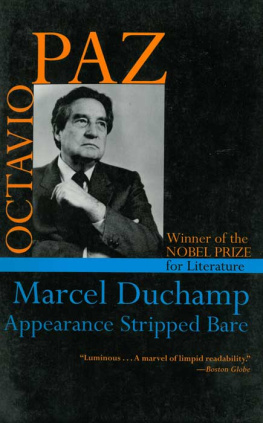
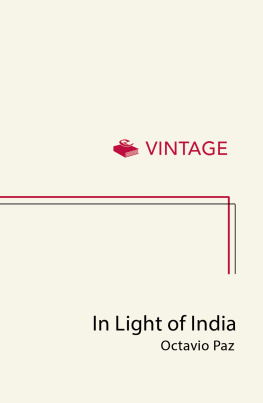
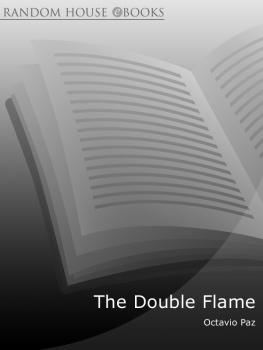
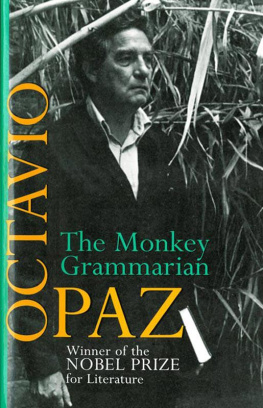
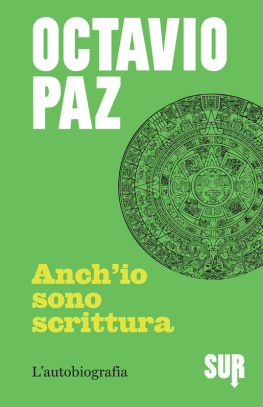
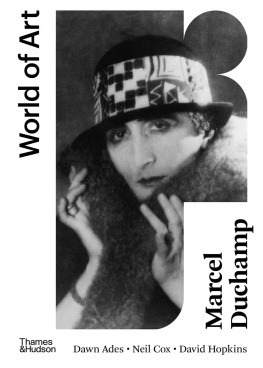
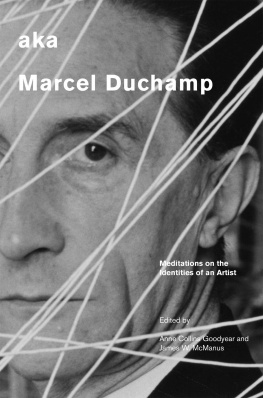
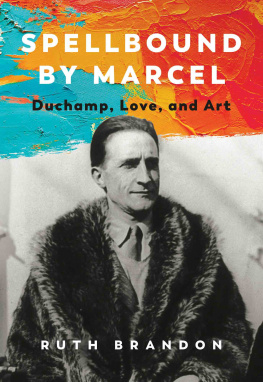
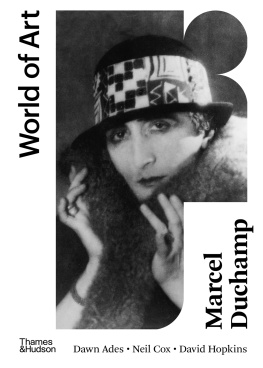

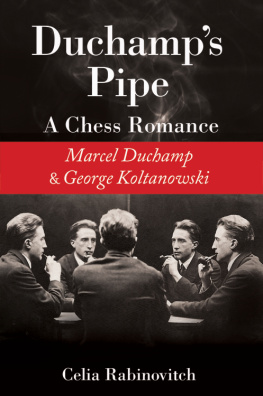
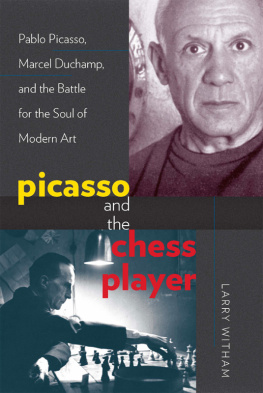
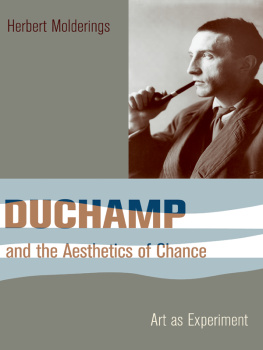
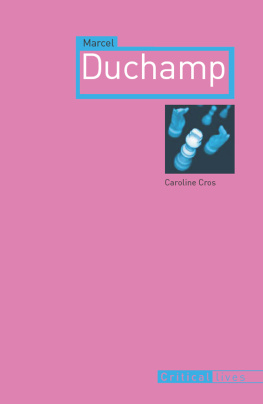
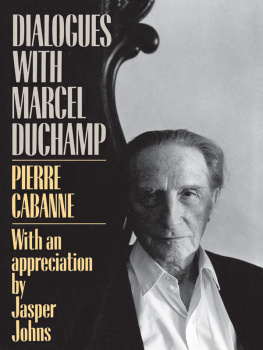
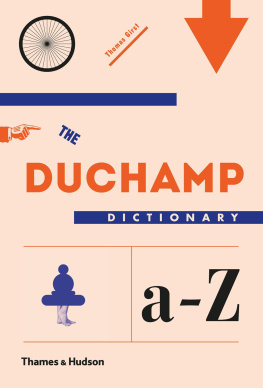



 In 1923 Marcel Duchamp left the Large Glass (The Bride Stripped Bare by Her Bachelors, Even) finally unfinished. That was when the legend began: one of the most famous painters of our century had abandoned art to devote himself to chess. But in 1969, a few months after his death, critics and public discovered to their amazement that Duchamp had been working in secret for twenty years (1946-66) on a work that was probably no less important and complex than the Large Glass. It was an Assemblage called Etant donns: 1 la chute deau, 2 le gaz d clairage (Given: 1. The Waterfall, 2. The Illuminating Gas), and it is now housed in the Philadelphia Museum of Art, as are most of Duchamps works. The title of the Assemblage alludes to one of the most important notes in the Green Box, that collection of ninety-three documents (photographs, drawings, and manuscript notes from 1911 to 1915) published in 1934 and constituting a sort of guidebook or manual to the Large Glass. And so the new work may be seen as another version of The Bride Stripped Bare by Her Bachelors, Even.
In 1923 Marcel Duchamp left the Large Glass (The Bride Stripped Bare by Her Bachelors, Even) finally unfinished. That was when the legend began: one of the most famous painters of our century had abandoned art to devote himself to chess. But in 1969, a few months after his death, critics and public discovered to their amazement that Duchamp had been working in secret for twenty years (1946-66) on a work that was probably no less important and complex than the Large Glass. It was an Assemblage called Etant donns: 1 la chute deau, 2 le gaz d clairage (Given: 1. The Waterfall, 2. The Illuminating Gas), and it is now housed in the Philadelphia Museum of Art, as are most of Duchamps works. The title of the Assemblage alludes to one of the most important notes in the Green Box, that collection of ninety-three documents (photographs, drawings, and manuscript notes from 1911 to 1915) published in 1934 and constituting a sort of guidebook or manual to the Large Glass. And so the new work may be seen as another version of The Bride Stripped Bare by Her Bachelors, Even.